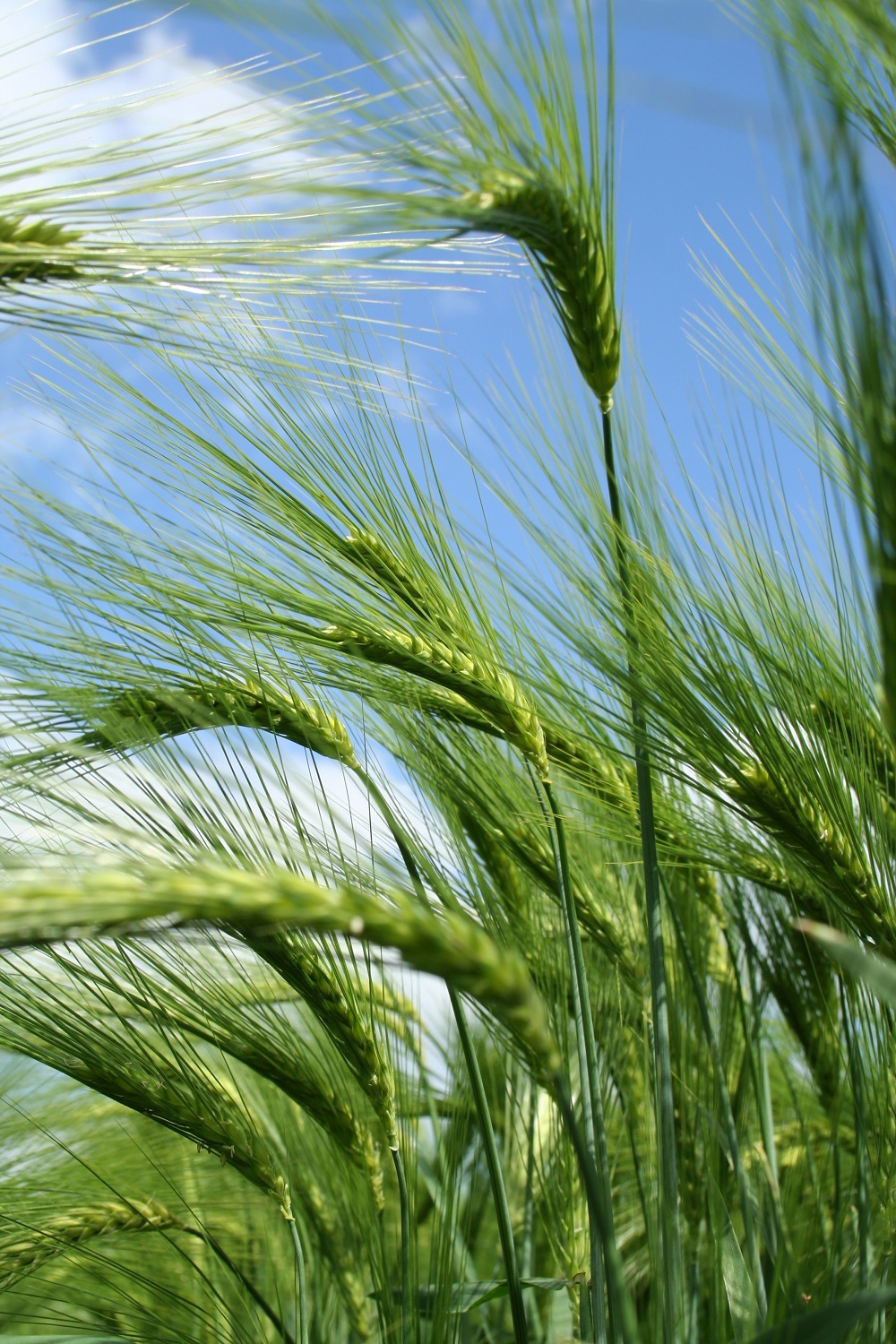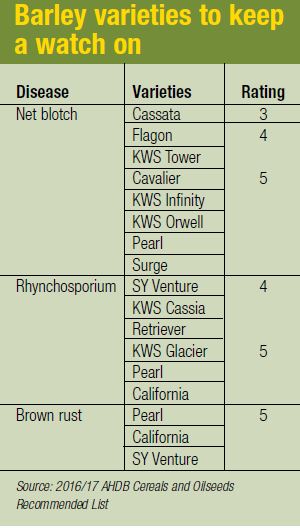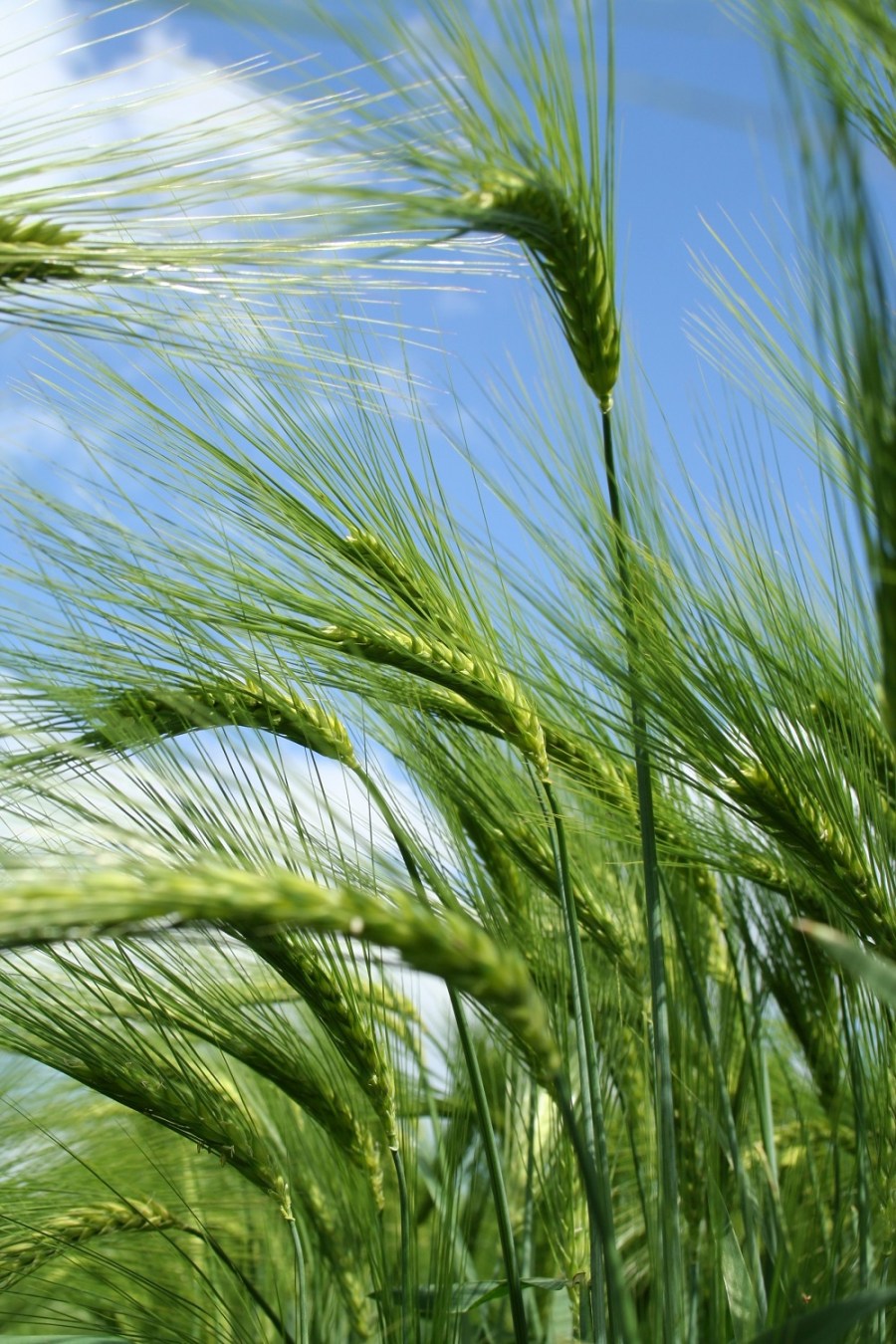 When it comes to barley varieties, they’re definitely not all the same. Hybrids actually need you to tear up the rule book when it comes to fungicide timings. CPM seeks guidance.
When it comes to barley varieties, they’re definitely not all the same. Hybrids actually need you to tear up the rule book when it comes to fungicide timings. CPM seeks guidance.
By Lucy de la Pasture
According to the AHDB early-bird forecast, the winter barley area is estimated to be down this year, in contrast to last year’s trend. But within that area, hybrid barley varieties have increased their share to capture about a fifth of the planted area. Barley’s no longer the poor relation to wheat and it’s increasingly important to get the agronomy right to make the most of its inclusion in the rotation.
According to Iain Hamilton, Syngenta field technical manager, historically there’s been a tendency to treat all barley varieties in the same way but to get the most out of them there’s scope for tailoring inputs.
One of the fundamental differences between barley and wheat is that in barley, the lower leaves and stem make an important contribution to yield, he points out.
It’s very important to protect these lower leaves and start fungicide programmes early.
“In barley successive leaves diminish in size, with the area of the flag leaf being half that of leaf two and a quarter of leaf five in conventional varieties. As a result, as much as 30% of the yield contribution comes from leaves four and five so it’s very important to protect these lower leaves and start fungicide programmes early, with a T0 spray often justifiable.

Not all barley is the same, advises Iain Hamilton – fungicides should be tailored to variety and disease risk.
“We talk a lot about diseases in winter wheat and matching fungicide programmes to varietal strengths and weaknesses, but exactly the same applies for barley,” he says. “Equally, using mixtures and sequences of active ingredients from different chemical groups as part of a resistance management strategy is paramount.”
Varieties can be broadly grouped according to their RL ratings for the main barley diseases; net blotch, rhynchosporium and brown rust. “You can then tailor fungicide programmes to the risk of disease in your locality, with ramularia much more significant in the north of the country and rhynchosporium predominant in the wetter western counties,” reckons Iain Hamilton.
Careful management
“Net blotch is increasingly requiring more careful management, with the strobilurin group of chemistry not always fully effective against the disease because of resistance. The resistance mutation isn’t as absolute as with septoria resistance in wheat, but there’s still a very marked reduction in efficacy,” he explains.
Iain Hamilton recommends using an SDHI at both T1 and T2 timings, adding that Cebara (cyprodinil+ isopyrazam) consistently performs well in trials, particularly on net blotch. It has the added benefit of containing a partner product with a unique mode of action supporting the SDHI, without over reliance on the azole group of chemistry, he points out.
“Where rhynchosporium is the main problem, adding prothioconazole (PTZ) to any SDHI programme is advisable. Ramularia requires the addition of chlorothalonil to the tank mix to help protect against the pathogen, with T2 being the key timing for ramularia control,” he adds.
When it comes to timing fungicide applications on the hybrid varieties of winter barley – Bazooka, Belfry and Volume – they’re a completely different kettle of fish to conventional barleys, says James Marshall-Roberts, Syngenta’s technical crop expert for hybrid barley.
“The hybrids have much bigger flag leaves and a bigger canopy, so make much more of a contribution to yield. Unlike in conventional varieties, T2 is equally as important as T1 and we’re finding there’s a benefit from pushing the fungicide timings back a bit,” he comments.
 “A Robust and persistent T1 should be applied at GS32 following a T0 if it has been required. If ramularia is a risk, applying a protectant fungicide, such as Bravo (Chlorothalonil) with your GS37 application of Terpal (mepiquat+ 2-chloroethylphosphonic acid), may be beneficial. The hybrids generally have good rhynchosporium resistance but may be susceptible to brown rust and net blotch, particularly the older varieties,” he says.
“A Robust and persistent T1 should be applied at GS32 following a T0 if it has been required. If ramularia is a risk, applying a protectant fungicide, such as Bravo (Chlorothalonil) with your GS37 application of Terpal (mepiquat+ 2-chloroethylphosphonic acid), may be beneficial. The hybrids generally have good rhynchosporium resistance but may be susceptible to brown rust and net blotch, particularly the older varieties,” he says.
“In trials we’ve found using a Cebara (cyprodinil+ isopyrazam) plus PTZ programme and delaying the T2 application to GS45-59, rather than the usual GS39-45, helps to retain Green Leaf Area. This allows the Hyvido variety to absorb as much sunlight as possible. Clean ears and awns maximise grain set, all of which convert into yield and good specific weights.”
Fungicide management also has an important role to play in preventing varieties from brackling, believes James Marshall-Roberts. “Volume, in particular, has a tendency to brackle in delayed harvest years and high rates of Cebara plus PTZ help prevent this. This is due to the greening effect of the SDHI which prolongs photosynthesis keeping the plant in good health and maintaining upper stem strength.”
Net blotch warrants robust approach in spring barley
The days of a “cheap’n’cheerful” approach to spring barley disease control may be over, believes Devon agronomist, Arthur Marshall. He’s been forced to increase his winter barley disease control programme to help manage the threat of net blotch in spring barley crops.
A series of recent mild winters has seen a surge in the disease and his spring barley programme is now a three-spray strategy, with SDHIs at the core. With few cultural options to help quell the disease, he feels he has little choice but to rely on more robust foliar programmes.
“Variety choice is driven by markets, yield reliability and straw. In my area Propino and Sanette dominate. Both have reasonable resistance to rhynchosporium but appear a little susceptible to net blotch. Clearly there are varieties that are a bit more resilient against the disease but they don’t provide the same opportunity for growers.”
Winter crops get two applications of Siltra Xpro (prothioconazole+ bixafen) following a cyprodinil at T0, a programme he is now extending to spring crops. “Early on, rhynchosporium is the main target but the T0 helps with net blotch too, plus it brings in an alternative mode of action. That’s important because the level of net blotch pressure we’ve been experiencing over the past two years is forcing us into using more potent chemistry,” he says.
The move to a more robust spring barley programme doesn’t concern Arthur Marshall, even with the lack of sunlight restricting grain fill in many seasons. “The problem here is our maritime climate. It’s too warm and wet, fuelling disease and often limiting crop potential.
“Some of my fields have water on three sides and even a moderate net blotch infection can take 20% of crop yield, which can be critical for crop going for feed use. But well managed crops will still achieve 7t/ha, justifying the higher disease-control spend.
“And when we do get those seasons where the weather is favourable, then yields typically hit the 8t/ha mark and with careful N applications, there’s the bonus of better premium market opportunities.”
Another agronomist who shares his concern about net blotch is Steve Cook of Hampshire Arable Systems. He has seen more evidence of the disease in the autumn but feels the situation is under control. He agrees that it’s increasing prevalence is due to cycles of favourable weather throughout the year and a resulting build-up of inoculum ahead of the following season.
He’s turned to two applications of an SDHI, but feels Fandango (prothioconazole+ fluoxastrobin) still has a place. “T1 is a good opportunity to get on top of the disease, so we go down the SDHI route at early stem extension, especially as spring crops don’t get a T0 and there are other targets such as mildew, rusts and rhynchosporium. Good disease control at T1 gives you a bit of flexibility at T2 and the chance to use prothioconazole with alternative modes of action,” he points out.
Bayer’s Tim Nicholson feels part of the net blotch problem could be rhynchosporium. He says growers can be forced into going too early at T1, extending the gap to T2. “I think the favourable weather has resulted in higher rhynchosporium pressure earlier in the season for both winter and spring crops, resulting in T1 sprays being brought forward.
“But with growers trying to hold their T2 sprays until full awn emergence in spring crops, the gap is becoming too stretched, letting in net blotch. Where growers have to apply T1s early, the potency of an SDHI such as bixafen is invaluable. But even then, make sure the gap to T2 doesn’t get stretched beyond four weeks,” he warns.
Arthur Marshall agrees and also points out that for mixed farms other priorities may contribute too. “If you’re TB testing then it really can intensify the pressure on farm resources. Even though it’s a short season for spring crops, application timing is still critical. No product will work as well as designed if it’s poorly timed, even more potent SDHIs,” he concludes.




